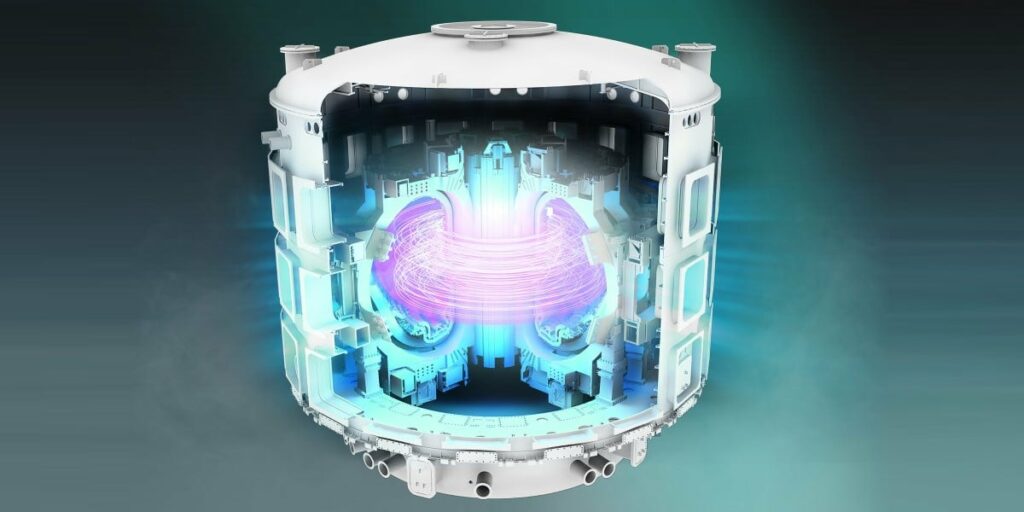The International Thermonuclear Experimental Reactor (ITER), a 35-nation effort to create electricity from nuclear fusion, has torn up its project plans and pushed operations of its tokamak back by at least eight years.
Tokamaks are typically designed around a doughnut-shaped vacuum chamber, inside of which gases are subjected to extreme heat and pressure and become a plasma. Strong magnets are used to keep that hot plasma away from the chamber’s walls, and the heat is used to boil water into steam that turns turbines to make electricity.
ITER has built what it claims is the world’s largest tokamak and hopes it will achieve a deuterium-tritium plasma – in which the fusion conditions are sustained mostly by internal fusion heating, rather than needing constant input of energy. The org aims to produce 500MW of fusion power from 50MW of input, as a demo that lights the way for commercial machines.
ITER director-general Pietro Barabaschi yesterday outlined [PDF] a new project baseline to replace the one in use since 2016. That older document foresaw “first plasma” in 2025 – but only as “a brief, low-energy machine test, with relatively minimal scientific value.” A planned series of experiments would proceed until 2033.
The org has known since 2020 that it would not achieve first plasma in 2025, so these changes are not unexpected.
COVID-19 complicated already-troubled efforts to build ITER’s tokamak, which was beset by quality problems and over-optimistic assumptions about what it would take to manufacture components.
Fair cop: ITER will need a 6000-ton magnet capable of storing 41 Gigajoules of energy. That can’t be easy to build!
“We could have retained the Baseline 2016 roadmap, but this would have been illogical – based on the availability of additional key components to construct a more complete machine,” Barabaschi conceded yesterday.
The new baseline prioritizes the Start of Research Operations – which are now hoped to commence in 2033. Barabaschi explained the delay will give ITER the chance to run more tests on some elements of the tokamak, meaning that a “more complete machine” will be available by 2033.
By 2039, ITER wants its Deuterium-Tritium Operation Phase to start – four years later than first planned.
Lawrence Livermore lab repeats fusion breakthrough – yep, still kinda works
Joint European Torus experiments end on a 69 megajoules high
World’s largest nuclear fusion reactor comes online in Japan
Microsoft signs up to buy electricity produced by fusion, perhaps in 2028
One big change to the baseline is using tungsten instead of beryllium for the tokamak’s First Wall – the bit facing plasma. ITER boffins have determined that tungsten “is more relevant for future ‘DEMO’ machines and eventual commercial fusion devices.”
An extra €5 billion ($5.4 billion) will be needed to realize this plan. ITER members are considering that requirement.
ITER’s post announcing the new baseline notes that the org’s “costs historically have been difficult to estimate precisely because the bulk of financial contributions are provided in-kind by ITER Members in the form of components, for most of which Member governments are not required to publish their actual costs.”
So take that €5 billion figure with a hearty pinch of plasma.
Fusion experiments have shown the tech has great promise as a source of clean energy. Which is why governments are throwing money at it. To date, however, no experiment has come close to ITER’s planned output – or even reliable operations – making Microsoft’s deal to source energy from fusion by 2028 vastly optimistic. ®
>>> Read full article>>>
Copyright for syndicated content belongs to the linked Source : The Register – https://go.theregister.com/feed/www.theregister.com/2024/07/04/iter_new_baseline_project_delays/
